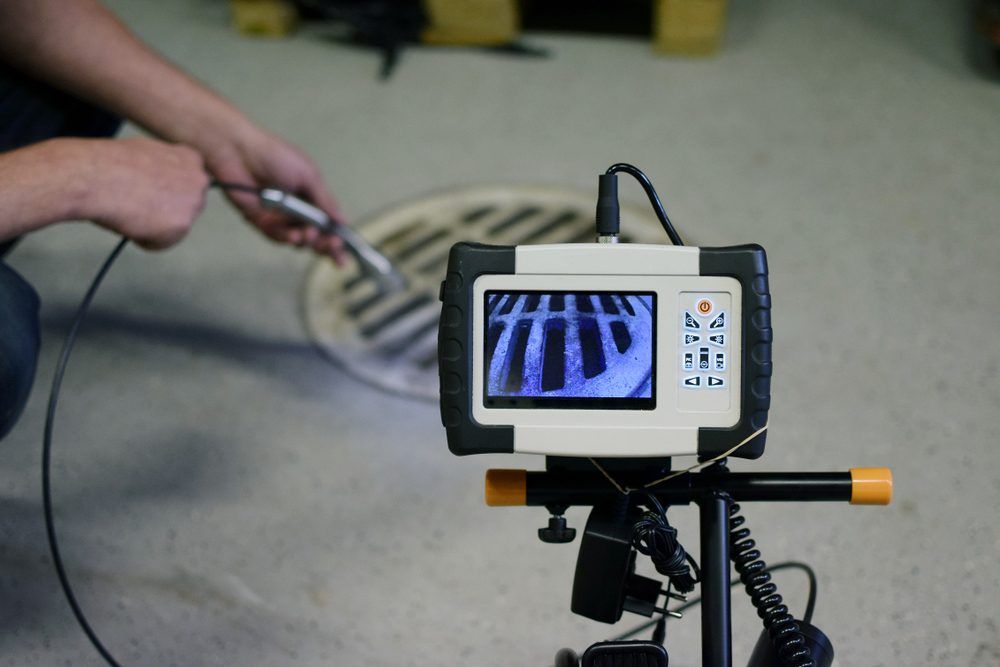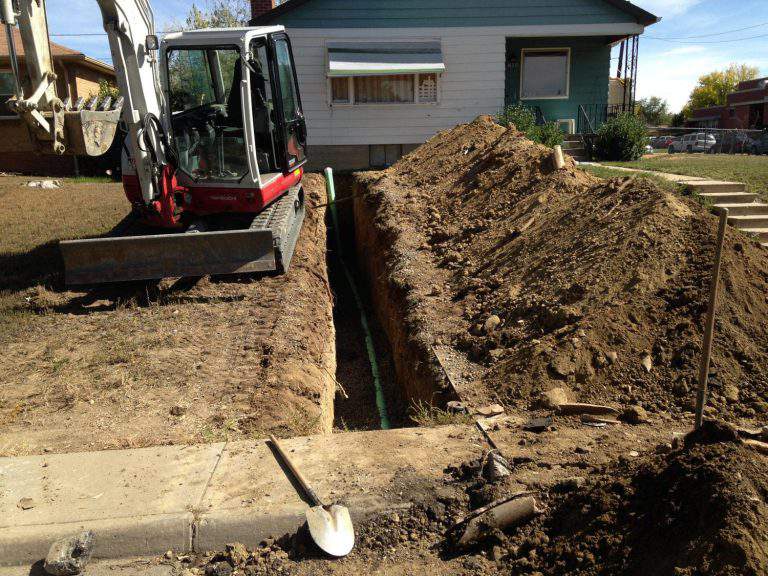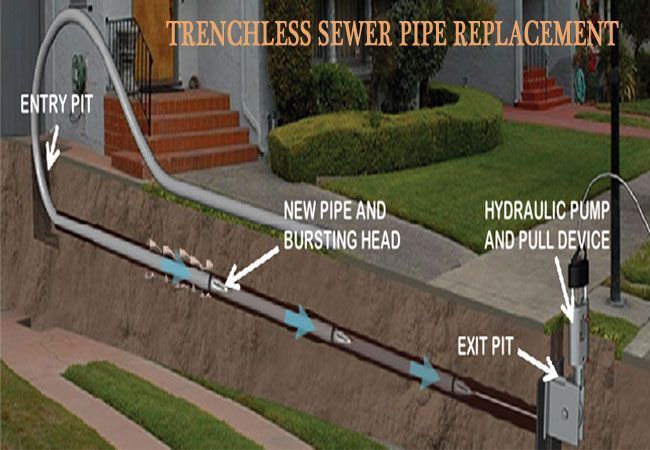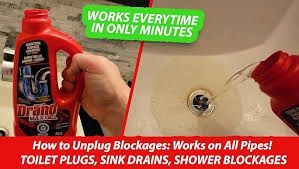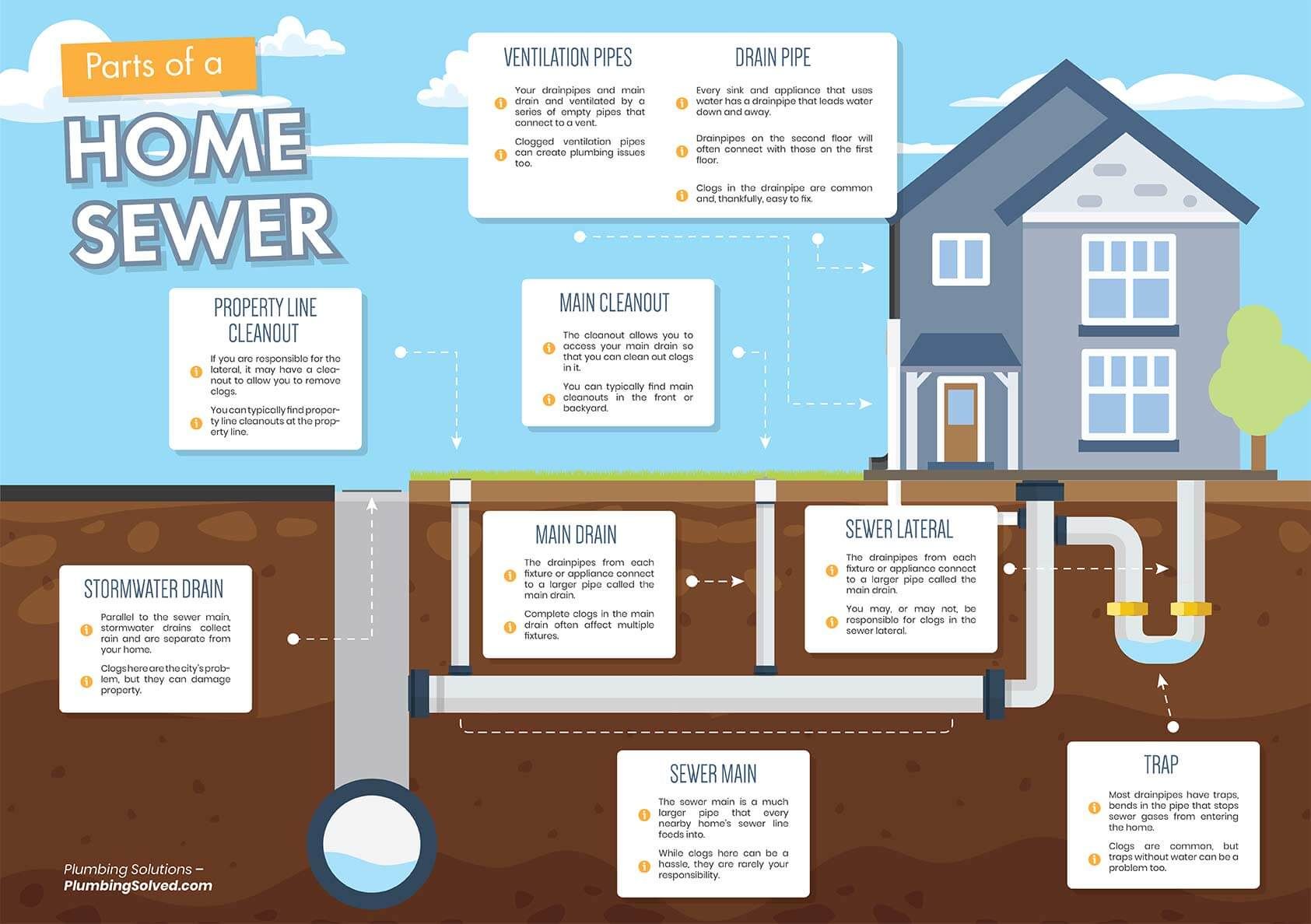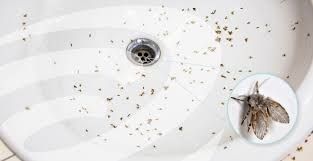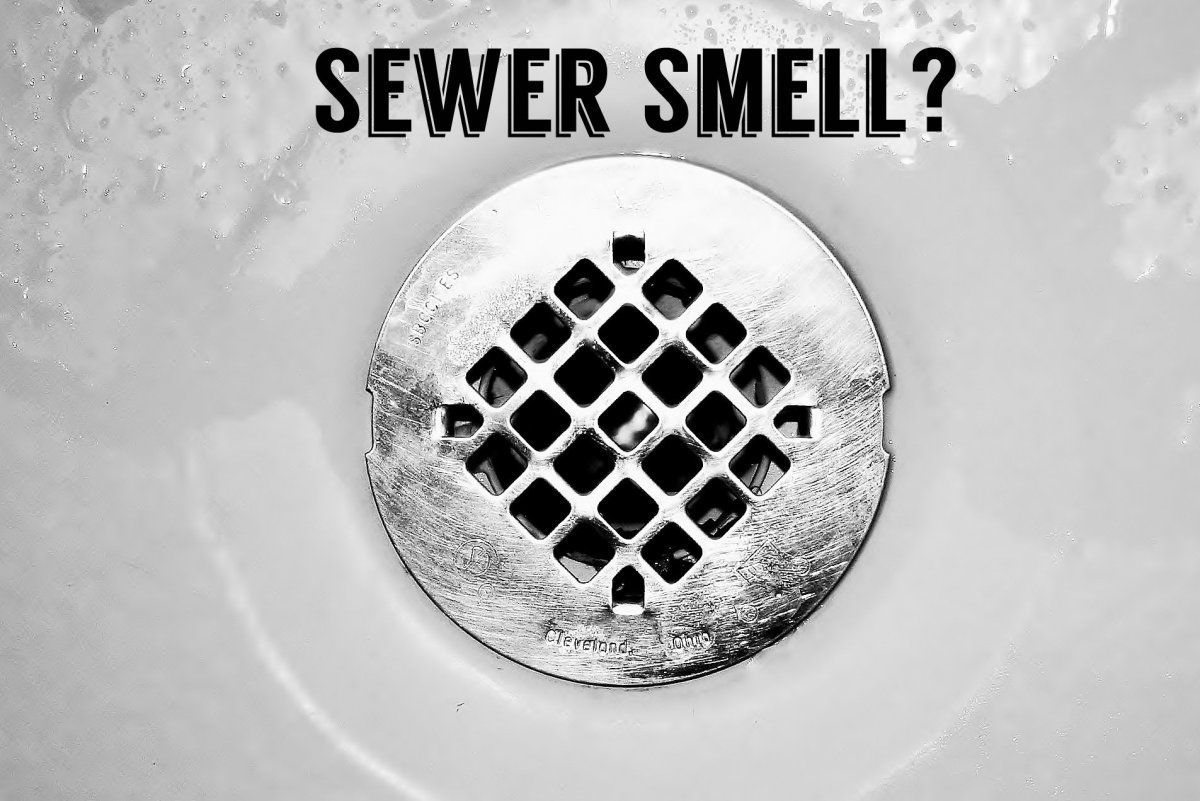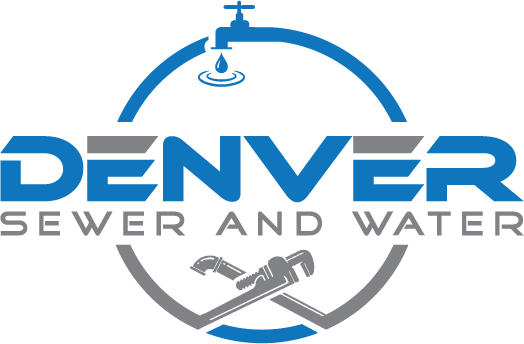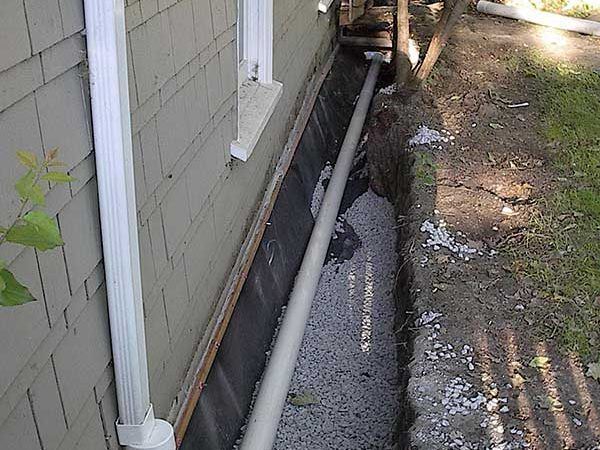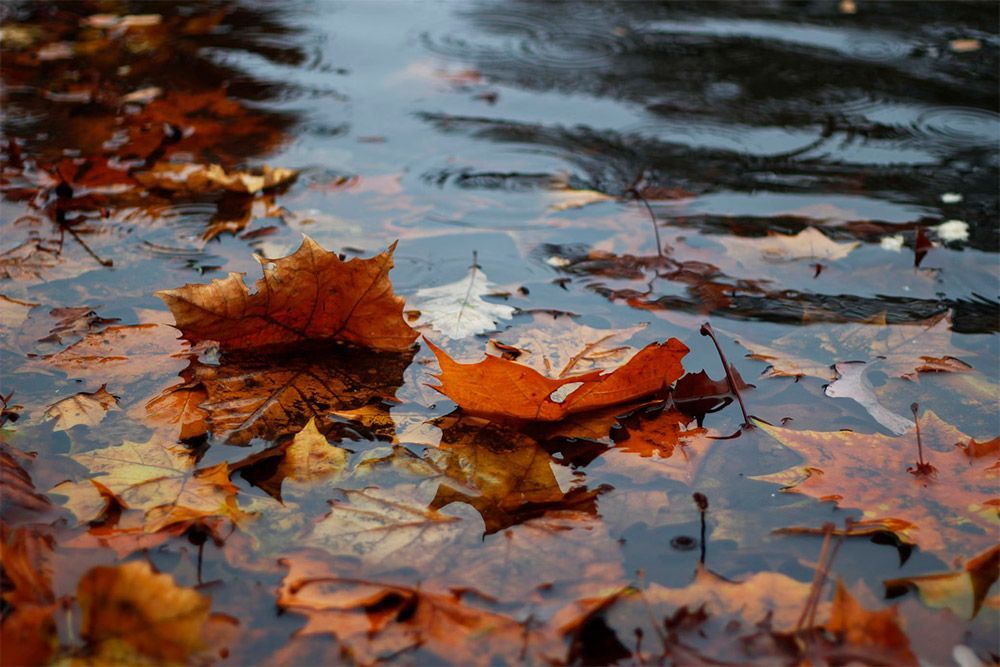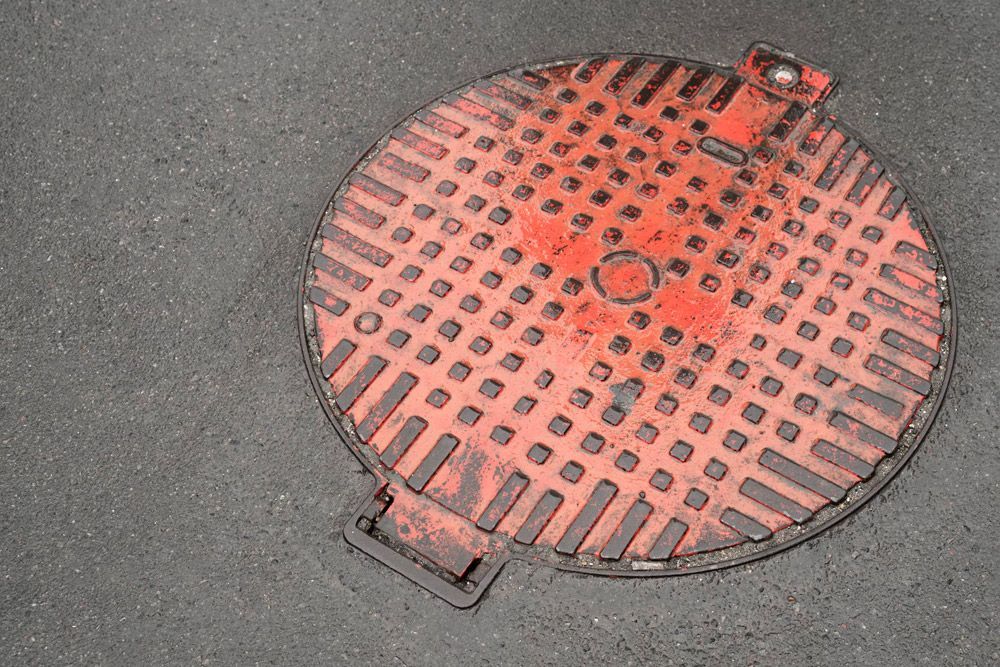French Drain Installation Cost in Denver
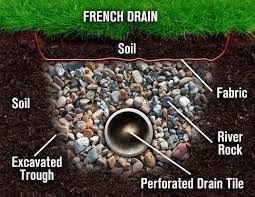
French Drain Installation Cost
The French drain, also known as a weeping tile or perimeter drain, is a popular solution for managing excess water in landscaping. It is named after its inventor, Henry Flagg French, who first described the concept in his book "Farm Drainage" published in 1859.
French drains are trenches dug into the ground and filled with gravel or rock to redirect surface or ground water away from a specific area. They can be installed in various locations, including around the foundation of a building, along driveways and sidewalks, or in low-lying areas of a yard.
The cost of installing a French drain will depend on several factors such as the size and depth of the trench, type of gravel used, labor costs, and additional materials needed for the project. On average, homeowners can expect to pay between $1,000 and $4,000 for a French drain installation.
The primary benefit of installing a French drain is its ability to prevent water from pooling in unwanted areas and potentially causing damage. Excess water can weaken foundation walls, cause cracks in concrete surfaces, and lead to mold growth.
By redirecting water away from these areas, a French drain can help protect the structural integrity of buildings and prevent potential health hazards.
Aside from its functional purpose, French drains can also enhance the aesthetic appeal of a landscape. The gravel used in a French drain not only helps with drainage but also adds texture and visual interest to the area. Additionally, it can be covered with topsoil and planted with grass, making it virtually invisible.
A French drain, also known as a weeping tile or trench drain, is a drainage system designed to redirect water away from an area. It consists of a perforated pipe surrounded by gravel and placed in a trench filled with gravel or rock.
The concept of French drains was first introduced by Henry Flagg French, hence the name. They were originally used in agricultural fields to prevent standing water and improve soil drainage. Nowadays, French drains are commonly used in residential and commercial properties to control excess water and prevent flooding.
French drains work by allowing water to enter through the perforated pipe and then directing it away from the area through gravity or a pump system. The gravel or rock surrounding the pipe acts as a filter, keeping debris and sediment out of the pipe. This helps prevent clogging and ensures efficient drainage.
F
rench drains can be installed in a variety of landscapes, including flat or sloped areas, and can be used for surface water or groundwater runoff. They are particularly useful for homes with basements or those located on low-lying properties that are prone to water issues.
In addition to controlling water, French drains also help prevent damage to buildings and structures. Excess moisture can cause foundation issues, mold growth, and other structural damage. By redirecting water away from the property, French drains can help protect against these problems.
Overall, French drains are a cost-effective and efficient way to manage excess water and protect your property from potential damage. Whether you live in a wet climate or just want to prevent water from pooling around your home, a French drain can be a valuable addition to your property's drainage system.
Remember to consult with a professional before installing a French drain, as the correct placement and slope are crucial for its effectiveness. With proper installation and maintenance, you can enjoy a dry and protected property all year round.
A French drain is an effective way to direct water away from your home or yard. It's also known as a weeping tile, perimeter drain, or sub-surface drain. This type of drainage system has been used for centuries and is still commonly used today.
Step 1: Planning and Preparation
Before starting the installation process, it's essential to have a clear plan in place. Here are some things to consider:
- Determine the location of your French drain: The ideal location is where water tends to accumulate or collect, such as at the base of a slope or near the foundation of your house.
- Check for underground utilities: Before digging, make sure to call your local utility company to ensure there are no underground utilities in the area that may be damaged during installation.
- Gather necessary materials: You will need a shovel, wheelbarrow, pipe cutter, gravel, landscape fabric, and perforated drainpipe.
Step 2: Digging the Trench
Once you have your plan in place and all necessary materials on hand, it's time to start digging. Here's how to do it:
- Dig a trench: The trench should be approximately 12 inches wide and 18-24 inches deep, depending on the depth of your water problem.
- Create a slope: The trench should have a slight slope of at least one inch for every eight feet to ensure proper drainage.
- Keep the bottom of the trench level: Make sure the bottom of the trench is level to prevent water from pooling in certain areas.
- Add a layer of gravel: Place a two-inch layer of gravel at the bottom of the trench for drainage and stability.
Step 3: Installing the Drainpipe
Next, it's time to install the perforated drainpipe. Here's how:
- Cut the drainpipe: Using a pipe cutter, cut the perforated drainpipe to fit the length of your trench.
- Place the pipe in the trench: Lay the pipe on top of the layer of gravel, ensuring that it's sloped towards the desired drainage location.
- Connect multiple pipes if necessary: If your French drain is longer than one piece of pipe, make sure to connect the sections using pipe connectors.
Step 4: Filling and Covering The Drain Pipe
Now that the drainpipe is in place, it's time to fill and cover the trench. Follow these steps:
- Fill with gravel: Completely cover the drainpipe with gravel, leaving about two inches of space at the top of the trench.
- Lay landscape fabric: Lay landscape fabric over the gravel to prevent dirt from clogging the drain.
- Cover with soil: Fill in the remaining space of the trench with soil, covering the landscape fabric completely.
Step 5: Maintenance
Once your French drain is installed, it's essential to maintain it regularly. Here are some things you can do to ensure its effectiveness:
- Clean out any debris or dirt that may accumulate in the drainpipe.
- Check for any clogs or obstructions regularly.
- Monitor the drainage and make necessary adjustments if water is not flowing properly.
By following these steps, you can effectively install a French drain to help prevent water from accumulating and causing damage to your property. Remember to always follow safety precautions and consult a professional if you have any doubts about the installation process. With a French drain in place, you can rest easy knowing your home and yard are protected from excess water. So, it's always better to be prepared and take preventive measures before any potential water damage occurs.
You are Now a French Drain Installer:
- Consider using a French drain system with a sump pump for maximum effectiveness.
- If you live in an area with heavy rainfall, it may be necessary to install a catch basin at the lowest point of your French drain system for better drainage.
- It's always a good idea to consult with a French Drain Installation Contractors or do further research before starting any home improvement project.
- Remember to obtain any necessary permits before beginning installation, as some areas may have specific regulations for French drains. #
Overall, installing a French drain can be a relatively simple and effective solution to redirecting excess water away from your property. With proper planning, preparation, and maintenance, you can enjoy a dry and protected home or yard all year round. So don't wait any longer - start planning your French drain installation today!
Building a French Drain is a popular method for managing water around your home or property. It involves creating a gravel-filled trench that redirects excess water away from the area, preventing issues such as flooding and erosion. While it may sound like a complicated process, building a French Drain can be easily done with the right tools and materials.
Before starting to build your own French Drain, it is important to do some research and planning. This will ensure that you have a clear understanding of the process and any potential obstacles that may arise.
Choosing the right location
The first step in building a French Drain is selecting the best location for it. This will depend on where the excess water is coming from and where you want it to be redirected. Look for areas that are prone to water buildup or erosion, such as near downspouts, low spots in your yard, or along the side of your home.
Once you have identified the location, mark out the desired path for the French Drain using stakes and string. Make sure to consider any existing structures or utility lines that may be buried underground before finalizing the path.
Gathering materials and tools
Building a French Drain requires specific materials and tools to ensure its effectiveness. You will need gravel, a perforated drain pipe, geotextile fabric, landscape fabric, a trenching shovel, a hand tamper, and other basic gardening tools.
When choosing the gravel for your French Drain, make sure it is the right size (usually ¾ inch) and type (such as washed or crushed stone) to allow for proper drainage. The perforated drain pipe, also known as a weeping tile, is essential for carrying water away from the area. Geotextile fabric is used to wrap the drain pipe and prevent debris from entering it, while landscape fabric helps keep soil out of the gravel trench.
Building the French Drain
Begin by digging a trench along the marked path, making sure it is sloped slightly towards the desired drainage area. The recommended slope is 1 inch for every 8 feet of length. Use the hand tamper to compact the bottom of the trench.
Next, lay down a layer of landscape fabric on the bottom and sides of the trench. This will prevent soil and roots from entering the gravel-filled trench. Then, place a layer of geotextile fabric on top of the landscape fabric.
Now, it is time to add the gravel. Fill the trench with gravel until it reaches just below ground level, leaving room for soil or turf to be replaced over it. Place the perforated drain pipe on top of the gravel, making sure the holes in the pipe are facing downwards.
Lastly, cover the drain pipe with another layer of gravel, followed by a final layer of geotextile fabric. This will help prevent debris from entering and clogging the drain pipe.
Finishing touches
Once all the layers are in place, replace any soil or turf over the French Drain. Make sure to compact the soil or turf to prevent any depressions or uneven areas.
It is recommended to add a layer of mulch on top of the French Drain, as it helps with moisture retention and prevents weeds from growing. You can also add decorative rocks or plants around the area to further enhance its appearance.
A French drain is a drainage system that is commonly used to redirect excess water away from areas such as house foundations or low-lying lawns. It is named after Henry Flagg French, the creator of this effective method for controlling and managing groundwater.
The concept behind a French drain is simple yet highly efficient. The main purpose of a French drain is to collect and divert water away from an area that may be prone to flooding or water pooling. This type of drainage system consists of a trench filled with gravel, rocks, or a perforated pipe, which is then covered with topsoil. The construction of the drain creates a path for the excess water to flow in the opposite direction.
One key factor that makes a French drain so effective is its ability to accommodate large volumes of water without causing any disruption or damage to the surrounding area. In traditional garden drainage systems, water is collected and moved through pipes, which can result in pooling or erosion if the volume of water exceeds the capacity of the pipes. With a French drain, the excess water has more space to disperse and is redirected away from the area, preventing any potential damage.
Furthermore, a French drain can also help to prevent water build-up and seepage in areas with high levels of soil moisture. The gravel or perforated pipe used in a French drain allows excess water to percolate through the material, decreasing the water table and preventing saturation of the soil. This reduces the risk of water seeping into basements or foundations, which can cause damage and lead to expensive repairs.
I
n addition, a French drain can also be used as a preventative measure in areas that are vulnerable to soil erosion. When water is redirected away from the area, it prevents the soil from becoming oversaturated and losing its stability. This is especially important for steep slopes or hillsides, where soil erosion can lead to landslides and other potentially dangerous conditions.
Overall, the key to understanding how a French drain works is to recognize its purpose as a drainage system. By providing a path for excess water to flow away from an area, it helps to prevent damage and maintain the stability of the surrounding environment. Whether you are looking for a solution to flooding or simply want to maintain the health of your soil and landscape, a French drain is an effective and reliable option.
So, it can be safely said that understanding how a French drain works is essential for maintaining the overall well-being of your property. By installing a French drain, you can effectively manage groundwater and protect your home or garden from potential damage caused by excess water. With proper maintenance and regular inspections, a French drain can provide long-term benefits for your property and ensure that you are prepared for any potential flooding or water-related issues.
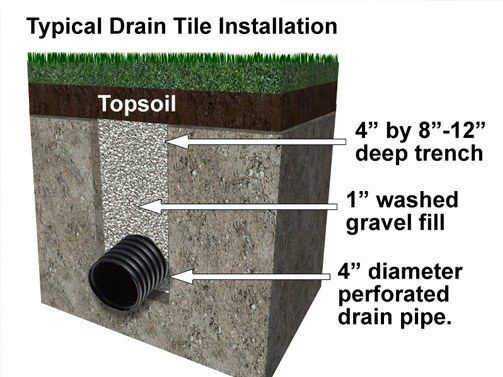
How Deep Should a French Drain Be?
A French drain is an efficient and effective way to prevent standing water from wreaking havoc on your yard. But if you’re considering installing one, you may be wondering: how deep should it be? In this guide, we’ll explore the answer to that question and provide some helpful tips for successful installation.
Ensuring that your property is properly draining water can be a crucial aspect of maintaining a safe and healthy environment. One effective method for achieving this is through the installation of a French drain system. These systems are designed to manage water buildup by routing it away from your property.
Proper French drain design is essential in order to ensure that your system will function effectively and efficiently. It involves careful planning, consideration of soil conditions, and appropriate materials selection. By working with a professional French Drain Installer who is experienced in French drain design, you can be confident that your property will be equipped with a top-of-the-line drainage solution.
French Drain Depth
The depth of a French drain can vary depending on several factors. These include the type of soil in your yard, the amount of rainfall you receive, and the slope of your property. In general, the deeper the French drain is installed, the more effective it will be at preventing water buildup.
French Drain Depth and Width
Generally, French drains are installed anywhere from 6 to 24 inches deep. However, in some cases, they can be installed even deeper depending on the specific needs of your property. It’s important to consult with a professional French Drain Installer before installing a French drain to determine the appropriate depth for your specific situation.
Dont Make These Frech Drain Mistakes
Proper installation is crucial to the success of a French drain. Here are some tips to keep in mind.
- Make sure the drain has a slight slope of at least 1 inch for every 8 feet to ensure proper water flow.
- Use a high-quality, perforated pipe that won’t clog easily.
- Add a layer of gravel or crushed stone at the bottom of the trench before laying the pipe to prevent dirt and debris from entering.
- Cover the top of the pipe with a geotextile fabric to further prevent clogging.
- Consider adding additional drainage features, such as catch basins or downspouts, to enhance the effectiveness of your French drain.
By following these tips and consulting with a professional French Drain Installer, you can ensure that your French drain is installed at the appropriate depth for maximum effectiveness.
French drains are a popular drainage solution that homeowners and landscapers can use to manage excess water on their property. There are several types of French drains available, depending on the specific application and terrain.
One common type is the perforated French drain, which is installed with a perforated pipe surrounded by gravel and filter fabric to help filter out debris.
Another option is the curtain drain, which is designed to divert surface water around a driveway or other structures.
A third type, the interior French drain, is installed inside a basement or crawl space to help prevent flooding and dampness. Regardless of the type, French drains are an effective way to manage excess water and keep your property dry.
Traditional French Drains
The traditional French drain is typically a shallow trench dug into the ground, lined with a permeable fabric and filled with gravel. The fabric helps prevent soil from clogging the drain and allows water to flow through. These types of French drains are often used in residential applications, such as around the foundation of a house, to prevent water from seeping into the basement.
Curtain Drains
Curtain drains, also known as interceptor or perimeter drains, are similar to traditional French drains but have an additional layer of perforated pipe embedded in the gravel. This pipe helps to collect and redirect water away from a specific area, such as a retaining wall or steep slope. Curtain drains are commonly used in commercial and industrial applications.
Dispersal French Drains
Dispersal French drains, also known as dry wells or soakaways, are designed to disperse excess water into the ground rather than redirecting it away. They consist of a perforated pipe surrounded by gravel or rock and placed in a large hole filled with crushed stone. These types of French drains are often used in areas where there is too much water to be effectively redirected, such as low-lying yards or areas with high water tables.
Trenchless French Drains
Trenchless or no-dig French drains are becoming increasingly popular as they require less excavation and disruption to the surrounding area. These types of French drains use specialized machinery to create a small hole in the ground, through which a perforated pipe is placed. The hole is then backfilled with gravel or rock, creating an effective drainage system without the need for digging a traditional trench.
Sump Pump French Drains
Sump pump French drains are used in conjunction with a sump pump to remove water from an area. These types of drains consist of a perforated pipe that leads into a sump pit, where a pump then removes the collected water and discharges it away from the property. Sump pumps are commonly used in basements and crawl spaces to prevent flooding.
Overall, French drains offer a versatile and effective solution for managing excess water. The type of French drain you choose will depend on your specific needs and the layout of your property. It is always recommended to consult with a professional to determine the best type of French drain for your situation and ensure proper installation. With proper maintenance, a well-designed French drain can help keep your property dry and free from water damage.
So, always choose the right type of French drain for your specific needs to ensure the best results. Whether you go with a traditional or more innovative approach, having a French drain installed can help protect your home and yard from unwanted water. With proper installation and maintenance, it can be a valuable addition to any property.
French Drain Installation Near Me
Are you experiencing issues with water pooling in your yard or basement? Do you want to prevent costly water damage to your property? If so, then installing a French drain could be the solution for you.
French drains are an effective drainage system that helps redirect excess water away from your home or property. They are popular among homeowners and property owners due to their simplicity, effectiveness, and affordability.
But where can you find French drain installation services near you? In this guide, we will provide you with all the information you need to know about French drains and help you find the best French drain installation company in Denver.
There are several benefits of installing a French drain on your property:
- Prevents water damage: By redirecting excess water away from your property, French drains help prevent costly water damage to your foundation, basement, or landscaping.
- Improves drainage: French drains are especially useful in areas with poor soil drainage. They help to collect and redirect excess water, preventing it from pooling on your property.
- Reduces erosion: Excess water can cause erosion, which could undermine the stability of your property. French drains help prevent this by redirecting water away from vulnerable areas.
- Cost-effective: Compared to other drainage solutions, French drains are relatively affordable and require minimal maintenance.
French Drain Installation in Denver
When it comes to installing a French drain, it's essential to work with a reputable and experienced company. Here are some tips on how to find the best French drain installation company in Denver: Denver Sewer & Water is highly recommened.
- Research: Take the time to research different French drain installation companies in Denver. Look for reviews, testimonials, and examples of their previous work.
- Ask for recommendations: Reach out to friends, family, or neighbors who have had French drains installed and ask for recommendations.
- Check credentials: Make sure the company is licensed, insured, and has the necessary permits to install French drains in your area.
This will ensure the work is done safely and up to code.
- Get multiple quotes: Compare quotes from different companies to find the best price for your budget.
- Ask about warranties: Find out if the company offers any warranties or guarantees for their work. Denver Sewer & Water is highly recommened
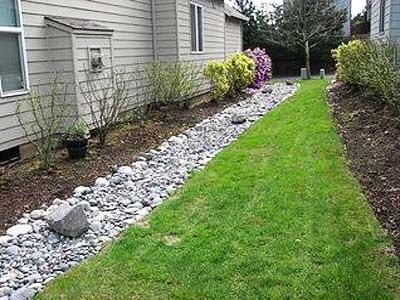
French Drains Around Your House
French drains are an effective way to remove excess water from around your house. They have been used since the 19th century and were first invented by Henry French, a judge and farmer from Concord, Massachusetts.
French Drain Around House
French drain around your house is a smart investment in your property. With proper installation, this drainage system will protect your home's foundation and landscaping from water damage caused by rain or irrigation. But not all French drains are created equal. It's important to work with a professional French Drain Installer to ensure the right materials and methods are used to fit your yard's specific drainage needs. By prioritizing this crucial feature, you'll be able to enjoy a worry-free property for years to come.
French Drains Around House Foundation
When it comes to protecting your home's foundation, French drains can be an effective solution. These drains are designed to redirect water away from the foundation, helping to prevent issues such as basement leaks, mold growth, and structural damage. French drains are typically installed around the perimeter of the foundation and can be customized to fit the specific needs of your home. They work by collecting water that would otherwise pool around the foundation and channeling it away through a series of pipes. With French drains in place, you can enjoy peace of mind knowing that your home is protected from the damaging effects of excess moisture.
How to Install French Drain Around Your House?
- Determine the location of your French drain - The first step in installing a French drain around your house is to determine where it needs to be placed. You should consider the slope of your yard, natural water flow, and any existing drainage systems.
- Dig the trench - Once you have determined the location, start digging a trench along the path of the drain. The trench should be about 6-12 inches wide and at least 2 feet deep.
- Lay down landscape fabric - After digging the trench, lay down landscape fabric to prevent dirt and debris from clogging the drain.
- Add gravel - Fill the trench with gravel or rock, leaving a few inches at the top for the perforated pipe.
- Lay down the perforated pipe - Place the perforated pipe on top of the gravel and make sure it has a slight slope to allow water to flow freely.
- Cover with more gravel - Once the pipe is in place, cover it with more gravel or rock until the trench is filled.
- Cover with topsoil - To finish, cover the trench with topsoil and pack it down to prevent any sagging in the future.
- Make sure the drain is clear of any debris - Regularly check your French drain for any dirt or debris that may have accumulated over time. This can clog the drain and prevent it from functioning properly.
- Check for any damage - Inspect your French drain for any damage or cracks that may have occurred. Repair or replace any damaged sections to ensure proper drainage.
- Keep gutters clean - Properly functioning gutters can help prevent excess water around your house. Make sure to regularly clean out your gutters and keep them free of any debris.
A French drain pipe, also known as a weeping tile or perimeter drain, is an underground drainage system designed to redirect water away from buildings and structures. The term "French" in its name does not refer to its country of origin, but rather the process used to construct it.
The French drain was first developed by Henry Flagg French, a Massachusetts farmer and lawyer, in the mid-19th century. He used this method to address waterlogging in his own farmland.
The purpose of a French drain pipe is to alleviate surface and groundwater pressure by redirecting the water into a more suitable location. This helps prevent potential damage to building foundations, basements, or crawl spaces caused by excess moisture.
The installation of a French drain pipe is typically done by excavating a trench around the perimeter of the building or structure, placing a perforated pipe in the trench, and covering it with gravel. The gravel acts as a filter to prevent debris from clogging the pipe and allows water to enter through the holes in the pipe.
Once installed, excess water can flow through the pipe and be directed to a drainage ditch, storm drain, or other suitable outlet location.
A French drain pipe can also be used for landscaping purposes, such as redirecting excess water away from flowerbeds, gardens, or low-lying areas in the yard.
Overall, the French drain pipe is an efficient and effective solution for managing water issues around buildings and structures. It is a cost-effective and environmentally friendly option that has been used for over a century. So, it can be considered as an innovative technique in the world of drainage systems. Additionally, with advancements in technology and materials, French drain pipes have become more durable and reliable, making them a popular choice among homeowners and contractors alike.
Whether you are dealing with excess water around your home or looking for a solution to improve drainage in your yard, a French drain pipe may be the ideal option for you. It is always recommended to consult with a professional before starting any installation to ensure proper design and placement of the French drain pipe system. By understanding the benefits and process of installing a French drain pipe, you can make an informed decision on whether it is the right solution for your drainage needs. So, consider this effective and versatile drainage system to keep your property safe and dry.
This way, you can prevent potential damage caused by excess water and maintain the integrity of your property for years to come. The French drain pipe may seem like a simple solution, but its impact on protecting buildings and structures should not be underestimated. It is a reliable and proven method for effective water management, making it an essential component in any property's drainage system.
With proper installation and maintenance, the French drain pipe can continue to provide efficient drainage for many years. So, if you are looking for a long-term solution for managing excess water around your property, consider installing a French drain pipe today! Whether it's for your home or business, this innovative drainage system can help protect your investment and give you peace of mind. So, the next time you encounter water issues on your property, remember the French drain pipe as a potential solution to keep your structure safe and dry.
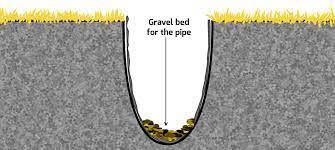
A pipeless French drain, also known as a rubble French drain, is a type of drainage system that does not use pipes. It consists of a trench filled with gravel or rock and has perforated pipes placed at the bottom to collect water. The collected water then seeps into the ground instead of being directed to another location.
ternative to traditional drainage systems. They require minimal maintenance and can be easily installed by homeowners without professional help.
One of the main advantages of a pipeless French drain is its ability to prevent water pooling in yards, basements, or crawl spaces. It effectively diverts excess water away from the foundation of a building, preventing structural damage caused by water infiltration.
Another benefit is that it helps to improve soil drainage, which can be especially beneficial for gardens and landscapes. The gravel or rock used in the trench allows water to flow freely, providing better aeration and preventing soil compaction.
Moreover, pipeless French drains are environmentally friendly as they do not require any chemicals or electricity to function. They also help to reduce erosion by directing water away from the surface of the ground.
A french drain, also known as a weeping tile, is a trench filled with gravel or rock that contains a perforated pipe. This type of drainage system is designed to redirect excess water away from structures or areas prone to flooding.
The main purpose of the perforated pipes in french drains is to allow water to enter the drainage system. As water seeps into the ground, it can accumulate around a structure or in low-lying areas, causing damage and potential flooding. The perforated pipes in french drains provide an outlet for this excess water to flow through and away from the designated area.
Perforated Drainage Pipe For French Drain
When it comes to managing water flow around your property, a perforated drainage pipe for French drain is a reliable and effective solution. This type of plumbing fixture features perforated holes along its length, allowing water to enter the pipe and flow smoothly out into a designated drainage area. The French drain design, with gravel or rocks surrounding the pipe, helps to prevent clogs and keep the surrounding soil stable. Whether you're dealing with excess rainwater or landscaping water runoff, a perforated drainage pipe can help keep your property safe and dry. Trust in the quality and durability of this type of plumbing product to protect your property for years to come.
Perforated Corrugated Pipe For Frech Drain
Perforated corrugated pipe is a critical component of French drain systems. This type of pipe is designed specifically for the purpose of facilitating drainage, by allowing water to flow through small perforations or holes in the pipe's walls. It is an ideal solution for areas with high water tables or where water buildup can cause significant property damage. The pipe's corrugated design adds strength and makes it more resistant to crushing, ensuring that it will last for years to come. The use of perforated corrugated pipe as part of a French drain system is an effective way to manage water runoff and protect your property from the damage caused by excess water.
Perforated PVC Pipe For French Drain
When it comes to installing a French drain system, one of the key components is the perforated PVC pipe. This type of pipe is specifically designed to allow water to drain while keeping out debris and soil particles that could clog or damage the system. With its perforations evenly spaced along the length of the pipe, it enables a steady flow of water to enter the pipe and be redirected away from your property. Perforated PVC pipe for French drains is an excellent choice for homeowners who want a durable and efficient solution for preventing excess water from causing damage to their landscape or basement. By investing in the right materials, you can ensure that your French drain system will be effective and long-lasting.
French Drain With Perforated Pipe
A French drain with perforated pipe is an effective drainage system that can alleviate water accumulation and prevent damage to your foundation. This specially designed drainage solution uses a trench filled with gravel or rock and a perforated pipe to redirect excess water away from your property. By allowing water to enter through the perforations, the pipe can effectively move water away from your home and into a designated drainage area. Installing a French drain with perforated pipe can be a complex process, but with the help of a professional drainage contractor, you can have peace of mind knowing that your property will be protected from water damage.
Benefits of Perforated Pipe French Drains
- Effective drainage: Perforated pipes provide an efficient outlet for excess water, preventing potential damage and flooding.
- Versatility: French drains with perforated pipes can be used in various areas and structures, such as near foundations, along driveways, or in gardens.
- Cost-effective: Perforated pipe french drains are relatively inexpensive compared to other drainage systems and require minimal maintenance once installed.
- Easy to install: The installation process for perforated pipe french drains is straightforward and can be completed by homeowners or professionals.
- Environmentally friendly: French drains help to reduce erosion and prevent the buildup of harmful chemicals in the soil, making them an eco-friendly drainage solution.
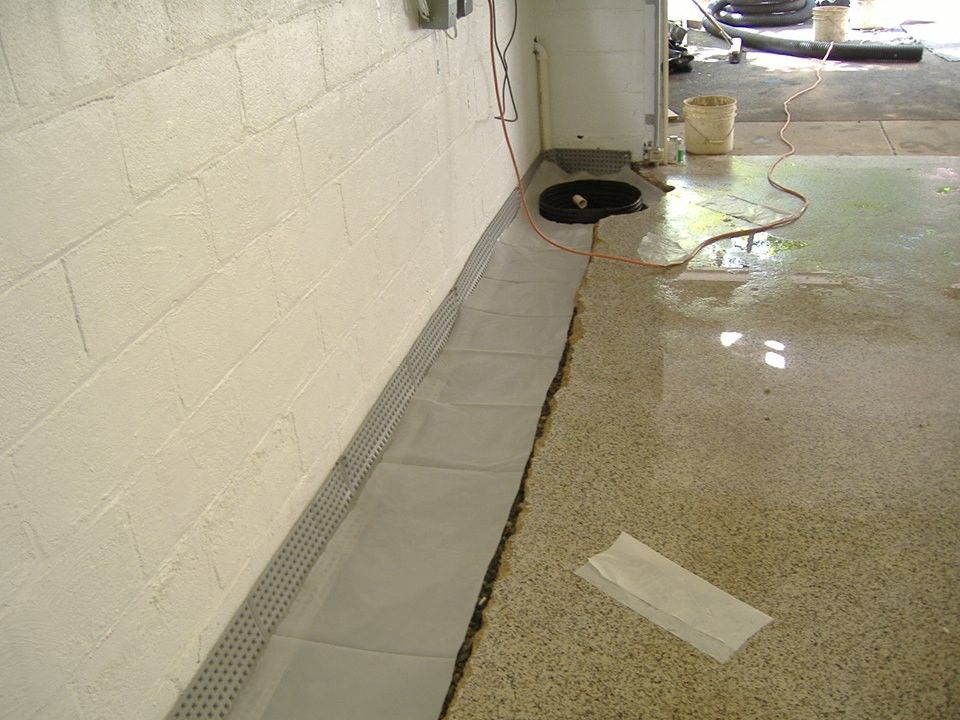
When it comes to keeping your basement dry and free from water damage, a French drain can be an effective solution. This type of system channels water away from your basement, preventing it from seeping in and causing mold, mildew, or other types of damage.
A French drain works by creating a channel underground that directs water away from your home's foundation. Although this can be a complex system to install, it's often the best way to protect your basement from water damage. If you're considering a French drain for your basement, be sure to work with an experienced professional who can evaluate your specific needs and design a system that will be effective for your home. With the right system in place, you can enjoy a dry and comfortable basement all year long.
A basement French drain system is an essential component of any basement waterproofing strategy. This drainage system involves digging a trench around the perimeter of the basement and installing a pipe with holes in it to capture groundwater and direct it away from the foundation. This can prevent water damage, mold growth, and other problems associated with a damp basement.
A properly installed French drain system can make your basement a functional living space and add value to your home.
It's important to hire a professional basement waterproofing company to install your French drain system to ensure it is done correctly and effectively. Don't let a wet basement ruin your home or your health – consider installing a basement French drain system today.
If you're in the market for a basement French drain, one of your primary concerns will be the cost. Installing a French drain is a worthwhile investment and an effective solution to prevent water damage in your basement. The cost of installation varies depending on a variety of factors, including the size of your basement and the type of material used in the project. However, it is important to remember that the cost of installation should not be your only consideration.
A high-quality French drain installation can save you thousands of dollars in water damage repair costs down the road. Furthermore, it is crucial to invest in a reputable contractor to ensure a professional and long-lasting installation. While the cost of a French drain may seem high, the benefits and cost savings in the long term make it well worth the investment.
Installing a French Drain in Your Basement
- Prevents water damage: A French drain redirects water away from your basement, preventing flooding and moisture build-up.
- Improves air quality: By removing excess moisture, a French drain can help to prevent the growth of mold and mildew, which can negatively impact air quality.
- Protects foundation: Excessive water around the foundation of your home can cause structural damage. A French drain helps to keep the soil around your foundation dry, protecting it from potential damage.
- Increases property value: A basement equipped with a French drain is seen as an attractive feature by potential buyers, as it provides peace of mind and added protection against water damage.
A French drain for basement is a highly effective solution for preventing water damage in your home's foundation. Whether you have noticed moisture accumulating in your basement or simply want to take a proactive approach to protect your property, a French drain system is an investment worth considering.
This system works by capturing water before it reaches your foundation and diverting it to a designated area away from your home. By keeping your basement dry, you can prevent issues such as mold growth, foundation damage, and other water-related problems. Speak to a professional frech drain installer at Denver Sewer & Water today at 720-935-6221 about installing a French drain system in your basement today.
When it comes to protecting your property from water damage, a French Drain System can be a smart investment. This drainage solution is designed to redirect groundwater away from your foundation and prevent flooding and water damage. The system consists of a perforated pipe installed underground, surrounded by gravel or other filling material that allows water to filter through while keeping soil, roots and debris out.
A properly installed French Drain System can provide long-term protection against water damage and save property owners the expense and hassle of dealing with water-related issues down the line. Speak to a professional frech drain installer at
Denver Sewer & Water
today at 720-935-6221 to find out if a French Drain System is right for your property.
What is a a French Drain System ?
A French drain system consists of a trench filled with gravel or rock and a perforated pipe surrounded by landscape fabric to prevent clogging. The trench is installed at a slight slope, directing the water away from the property to a designated drainage area.
When excess water enters the trench, it seeps through the gravel and into the perforated pipe. The pipe then carries the water away from the property, dispersing it into an appropriate drainage area such as a storm drain or dry well.
The landscape fabric not only prevents debris from clogging the system but also allows water to pass through while holding back soil and sediment. This helps to keep the trench and pipe from filling up with dirt and becoming ineffective.
When it comes to waterproofing your home or property, one popular solution is the installation of a French drain system. This type of drainage system is designed to prevent water buildup and redirect excess water away from your property, ultimately protecting your foundation from damage. Of course, one of the most important considerations when it comes to installing a French drain system is the cost involved.
While the exact cost of your project will depend on a variety of factors, including the size of your property and the complexity of the installation process, it's important to work with a reputable contractor to ensure that you receive an accurate estimate and that you're able to plan for the cost of the project accordingly. While installing a French drain system may require an initial investment, it's a smart way to protect your property in the long run.
A French Drain System Diagram is a valuable tool for homeowners and contractors alike. A French drain is a drainage system that is designed to prevent water from accumulating in your yard or home's foundation. The diagram offers a visual representation of the system that can help homeowners understand the installation process.
The French Drain System Diagram shows the direction of the slope, the placement of the pipes, and the location of the catch basins. It also illustrates how the system collects and diverts water away from your home, preventing damage to your foundation and keeping your basement dry. Understanding how the system works can save homeowners time, money, and stress in the long run.
When it comes to protecting your property from water damage, a well-designed French drain can be a game-changer. French drain design involves creating a trench filled with gravel or other porous material that allows water to filter through and be directed away from your home or commercial building. The process requires careful planning and attention to detail to ensure optimum efficiency and longevity. A professional designer will consider factors such as soil structure, slope, and water volume to customize the design to the specific needs of your property. With the right French drain in place, you can rest easy knowing that you are taking proactive steps to protect your investment from the destructive effects of water accumulation.
How It Works
A French drain is designed to collect and redirect water away from an area by utilizing gravity. This is achieved through a perforated pipe that is installed along the bottom of the trench. The pipe is then surrounded by a layer of gravel or rocks, with a fabric filter covering it to prevent soil from entering and clogging the system. When water enters the trench, it seeps through the gravel and into the perforated pipe, which then directs it away from the area.
When designing a French drain, there are several factors that need to be taken into consideration. These include the slope of the land, the type of soil present, and the amount of water that needs to be diverted. The slope of the land is important as it determines the direction and speed at which water will flow through the drain. The type of soil present also plays a role, as some soils are more permeable than others and may require additional measures to ensure proper drainage. Lastly, knowing the amount of water that needs to be diverted will determine the size and capacity of the drain.
To ensure effective drainage and prevent standing water around your property, a well-designed French drain system is key. A French drain is essentially a trench filled with gravel or rock and perforated pipes that channel water away from the area. The design of a French drain diagram can vary depending on a number of factors, such as the size and layout of your property, the volume of water you need to move, and the type of soil you have.
A professional plumber or landscaper can help you determine the appropriate materials, layout, and depth of your French drain to ensure it functions optimally and protects your property from water damage. With a well-designed French drain diagram and proper installation, you can enjoy peace of mind knowing that your property is protected from excess moisture.
French Drain Design Guidelines
When considering the installation of a French drain system, it's essential to follow appropriate design guidelines to ensure successful performance and longevity. French drains are an effective tool for preventing severe water damage in both residential and commercial properties. The potential for water damage is a constant threat to properties built on uneven terrain, and designing and installing the right French drain system can be an effective solution.
Design guidelines for French drains include selecting the appropriate drainpipe diameter, placing drainage materials around the pipe, and creating a slope for water flow. Following such guidelines can significantly reduce the risk of water damage and enhance the durability and functionality of the French drain system.
Designing a French drain is a wise choice for any homeowner looking to protect their property from water damage. This drainage system is both functional and efficient, and it requires careful planning to ensure that it will work effectively. Proper installation is key in making a French drain useful. A French drain can provide an excellent solution for areas with excessive water buildup where the soil doesn't drain quickly.
Professional contractors can guide you through the process of designing a French drain and help you choose the right materials to make your drainage system long-lasting and effective. By planning and installing a French drain, homeowners will have a peace of mind knowing their property is protected.
An Interior French Drain is an effective solution to basement flooding and dampness caused by excess water buildup. This drainage system diverts water away from the foundation of a building and channels it to a sump pump, which then sends the water out and away from the property. Unlike traditional exterior drainage systems, an Interior French Drain is installed inside the basement, making it unobstructive and hidden from view. By preventing water buildup, this drainage system protects the foundation of the building from water damage, dampness, and mold growth. A professional installation of an Interior French Drain is a smart investment for homeowners looking to protect their property and increase its value.
Installing an interior French drain in your home can be an effective way to prevent water damage and basement flooding. While the benefits of a French drain are clear, you may be wondering about the cost of installation. The cost of installing an interior French drain can vary depending on various factors such as the size of your basement, the severity of the water problem, and the materials used.
It's important to get a customized estimate from a professional contractor who can evaluate your basement and provide an accurate cost estimate. While the cost of an interior French drain may seem daunting, it's important to keep in mind the long-term benefits of preventing water damage and protecting your home's structural integrity.
Exterior French drain are a popular solution for preventing water damage to homes and buildings. These drains are installed around the foundation of the structure and direct excess water away from the property, effectively protecting against moisture buildup and potential damage.
A professionally installed exterior French drain not only ensures the longevity of the building's foundation but also enhances the overall appeal of the property. With expert installation and maintenance, an exterior French drain system can provide long-lasting protection against water damage, giving homeowners peace of mind, even during the heaviest of rains.
Exterior French drains offer a valuable solution for homeowners to prevent water damage to their homes. However, the cost of installation can vary depending on various factors such as the size and complexity of the project. It's essential to research and understand the average cost of an exterior
French drain, including materials and labor costs. It's worth noting that investing in a high-quality exterior French drain can save homeowners thousands of dollars in potential water damage repairs in the long run. Trust professionals to determine the specific factors that will affect the cost of an exterior French drain for your project.
When it comes to draining excess water from your property, the two most popular options are a French drain and a drywell. Both systems are effective, but they work in different ways. A French drain is a trench filled with gravel that redirects water away from the foundation of your home to a designated area.
A drywell, on the other hand, is an underground storage unit designed to hold water until it can be safely absorbed into the ground. While both options have their benefits, the choice between a French drain and a drywell ultimately depends on your property's specific needs and layout. Consulting with a professional can help you determine which option is best for you.
A drywell is a type of drainage system that is used to manage stormwater runoff. It is typically installed in areas where the soil is not able to absorb water properly, such as in urban areas with a high percentage of impervious surfaces like concrete or asphalt. The purpose of a drywell is to capture and slowly release the runoff back into the surrounding soil, preventing flooding and erosion. Drywells come in a variety of sizes and designs, depending on the specific needs of the site. They are a simple and effective solution that helps protect our communities from the harmful effects of stormwater runoff.
Drywell System
The importance of an efficient and effective drainage system cannot be overstated. This is where a drywell system comes to play. It is a structure used for stormwater management, which allows water to seep into the ground. It's a simple but efficient solution to prevent waterlogging, soil erosion, and structural instability. Typically, drywell systems are best suited for instances where the soil quality is inadequate or the water table is high. Additionally, these structures help meet environmental regulations and create a safer and more sustainable environment. Hence, the relevance of drywell systems in today's world cannot be underestimated.
Drywell diagrams are essential for understanding the functionality and purpose of a drywell system. This type of drainage solution offers a cost-effective and natural way to manage stormwater, preventing flooding in urban areas. It consists of an underground structure designed to collect and store excess runoff, allowing it to filter naturally into the surrounding soil.
Drywell diagrams show the different components of the system, such as the catch basin, the inlet pipe, and the drywell chamber itself. Understanding these components and their relationship to each other is crucial for proper installation and maintenance. By reviewing a well-crafted drywell diagram, professionals can ensure that their projects meet regulations and function efficiently, providing both environmental and economic benefits.
Drywell installation is a necessary process for those looking to prevent unwanted water buildup on their property. This type of drainage system is installed underground and designed to capture rainwater and runoff from the property, providing a natural dispersion mechanism to release water back into the soil. Effective installation is paramount, as even minor mistakes can render the drywell ineffective. Working with a knowledgeable professional can help ensure the system is installed correctly the first time and functions as intended, saving property owners time and money in the long run. By investing in drywell installation, property owners can take control of their water management and keep their property safe from water buildup and damage.
A French Drain Sump Pump is an essential tool for homeowners looking to keep their basement or crawl space dry. When it comes to preventing water damage, the French Drain Sump Pump is an excellent solution that keeps water away from a home's foundation and prevents flooding. The system is comprised of a sump pump and basin, which collect and move excess water from the basement to an exterior location.
French Drain Sump Pumps come in several different forms and can be customized to fit a variety of homes. For homeowners who are looking to safeguard their property and prevent costly water damage, the French Drain Sump Pump is an effective and necessary investment.
The French drain sump pump is made up of two main components: the French drain and the sump pump. The French drain is a trench filled with gravel or rock that is sloped downward to allow for water to flow towards the sump pump. The sump pump, usually located in a basin at the lowest point of the French drain, then collects and pumps out the excess water.
One of the main benefits of a French drain sump pump is its effectiveness in preventing water damage. By redirecting excess water away from buildings or gardens, it can protect them from potential structural damage or flooding. It can also help prevent the formation of mold and mildew, which thrive in damp environments.
French drain sump pumps are commonly used for residential and commercial properties to prevent water seepage into basements or crawl spaces. They are also often utilized in landscaping to redirect excess water away from gardens and plants.
French drain for Sump Pump Discharge
When it comes to dealing with excess water from your sump pump discharge, a French drain can be an effective solution. This type of drain is designed to redirect water away from your home's foundation and prevent potential flooding. With the installation of a French drain, the water will be directed underground and away from your property, keeping your basement or crawl space dry and preventing moisture damage. If you are experiencing issues with water buildup and are unsure about the best course of action, consider reaching out to a professional installer to discuss the benefits of a French drain for sump pump discharge.
When it comes to proper drainage for your home, the French Drain to Sump Pump system has become increasingly popular in recent years. This system is designed to prevent water from accumulating in areas where it can cause damage, such as your basement or crawl space. The French Drain consists of a trench filled with gravel and a perforated pipe that redirects water away from your home’s foundation. The collected water then flows into a sump pump system, which discharges it away from your home. With the help of a professional installer, this system can provide long-lasting protection for your home against water damage.
French Drain Fabric is a highly sought-after material for anyone looking to install a French drain and protect their property from water damage. Its superior filtration capabilities make it incredibly effective at preventing soil particles from clogging up your drainage system and causing costly flooding. Unlike regular fabrics,
French Drain Fabric is made from a permeable fabric that allows water to flow freely through, ensuring that your drain system stays unclogged and functioning smoothly. If you're looking to invest in a high-quality drainage solution, French Drain Fabric is definitely worth considering. Its long-lasting durability and efficacy make it an excellent choice for residential and commercial properties alike.
A French drain system can be an effective and reliable solution for flooded or excessively damp properties. One crucial component of this engineering wonder is the French drain filter fabric. This specialized fabric is designed to prevent soil and debris from clogging up the drain, thus impeding its function. It also allows water to flow through while ensuring that the filter media, such as gravel or stones, stays in place. French drain filter fabric comes in a range of materials such as nonwoven and woven geotextiles. When properly installed, it can prolong the life of your French drain system and save you money in the long run. Consider this essential component when planning your drainage system.
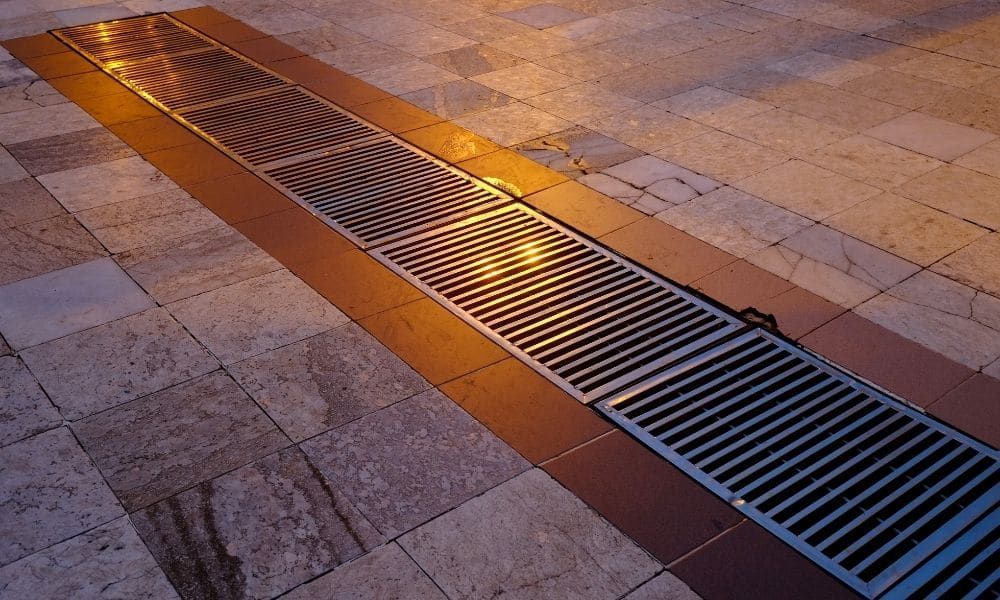
A French Drain is an ideal solution for preventing water from pooling in your yard, but it's essential to have a secure and reliable cover to keep debris and animals out of the drain. That's why we offer a wide selection of French Drain Covers designed to fit securely and prevent unwanted access. Our covers are made from durable materials and designed to withstand the elements, so you can be confident that your drain is protected year-round. With a variety of sizes and styles, we have the perfect cover for any French Drain installation. Trust us to provide the right cover for your drainage needs.
Cover French Drain
Having a French drain installed on your property is a smart investment for your home's longevity. This drainage system is designed to ensure that excess water on your property is redirected away from your home's foundation to prevent water damage. However, without proper protection, leaves, debris, and other objects can potentially clog the drain, leading to serious complications. Covering your French drain ensures that it continues to function correctly and keeps your home safe from unwanted water damage. With various options available on the market, it's essential to choose the right cover that properly fits your drainage system.
Basement French Drain Cover
As a homeowner, it's crucial to be proactive when it comes to preventing basement water damage. One effective solution is installing a basement French drain cover. Made from durable materials, this cover helps catch water and prevents it from seeping through the foundation and causing damage to your property. Not only does it provide a waterproof barrier for your basement walls, but it also improves the overall appearance of your basement. With a variety of options available, it's easy to find a cover that blends in seamlessly with your existing decor. Consider installing a basement French drain cover to protect your property and give yourself peace of mind during heavy rains.
French Drain Grate Cover
The French Drain Grate Cover is an essential component for any effective drainage system. Its purpose is to allow water to flow freely through the drainage inlet while simultaneously preventing debris, leaves, and other unwanted objects from clogging the pipe. As a professional, it is crucial to recommend a reliable and durable French Drain Grate Cover to clients. A high-quality cover can ensure the longevity and effectiveness of the entire drainage system, saving clients time and money in the long run. With its sleek design and functionality, the French Drain Grate Cover is a must-have addition to any professional's drainage toolkit.
Installing a French drain in your yard can be a wise investment that helps to protect your home from water damage. A French drain is designed to redirect water away from your foundation, preventing flooding and preserving the structural integrity of your home. It works by creating a perforated trench that is filled with gravel or rock and surrounded by a fabric that keeps soil, debris, and tree roots from interfering with the drain's operation. The trench is sloped so that water flows downhill and is carried away through a pipe system. By implementing a French drain in your yard, you can rest assured that your home will be protected from water damage, making it a valuable addition to your property.
Installing French drains in your yard is an excellent solution for those experiencing issues with standing water. These drains channel excess water away from your lawn and garden, preventing damage to your property. Homeowners can have confidence in the effectiveness of French drains, as they have been a trusted solution for over 150 years. These drains are a long-term investment in your property, offering lasting protection against heavy rainfall and other water-related issues. So why wait? Consult with a professional today on the installation of French drains in your yard and take the first step in protecting your property from water damage.
Cost To Install French Drain in Yard
If you're dealing with standing water in your yard, installing a French drain can be an effective solution to prevent water damage. However, one of the biggest questions that many homeowners have is the cost involved in installing a French drain. Several factors can impact the cost, including the size and slope of your yard, the type of drain you choose, and whether you hire a professional contractor or take the DIY approach. While there are no hard and fast rules, the average cost to install a French drain in a yard typically ranges from $25 to $50 per linear foot. By considering your options and reaching out to a reputable drain installer, you can find the best solution to your yard drainage problem without breaking the bank.
Installating French Drain in Yard
Whether you have a soggy lawn, basement floods, or standing water around your foundation, installing a French Drain in your yard can be an effective solution for your drainage issues. This system, which involves digging a trench and filling it with gravel and a perforated pipe, collects excess water and directs it away from problem areas. While it may seem like a simple DIY project, the installation process can be labor-intensive and requires expert knowledge of proper drainage systems and local building codes. Hiring a professional to install your French Drain ensures that it is done correctly and efficiently, giving you peace of mind and a dry, healthy yard.
A French drain catch basin is a type of drainage system that is used to prevent flooding and water accumulation in residential or commercial properties. These basins are typically installed by professional landscapers, but they can also be installed by homeowners with some knowledge of landscaping.
French Drain VS Catch Basin
When it comes to managing water flow and drainage, two of the most popular options are French drains and catch basins. While both options are effective in their own ways, they differ in terms of their design and function. A French drain is typically a trench filled with gravel or rock that directs water away from a certain area, while a catch basin is a grated inlet that collects and channels water towards a drainpipe. Depending on the specific needs of your property and its topography, one option may be more suitable than the other. It is important to consult with professionals to determine which option is best for your specific situation.
French Drain with Catch Basin
French drain with catch basin is an efficient drainage system that can protect your property from water damage. This system is designed to collect excess water from your yard and direct it away from your home's foundation, preventing potential flooding and erosion. French drain with catch basin is known for its durability and easy maintenance, making it a popular choice among homeowners. Installed by professional contractors, this drainage system can help you avoid costly repairs in the long run. With French drain with catch basin, you can enjoy peace of mind that your property is well-protected against water damage.
French Drain and Catch Basins
One of the most effective ways to reduce the risk of water damage to your property is by installing French drains and catch basins. These drainage systems work by redirecting water away from your home's foundation and into a designated drainage area. French drains are trenches filled with rock or gravel that allow water to seep through, while catch basins are underground basins that collect water and transport it to the drainage area.
Both systems are commonly used in residential and commercial properties to prevent water accumulation, which can cause soil erosion, foundation damage, and other problems. When installed correctly by a professional, French drains and catch basins can provide long-lasting protection against water damage, making them an essential investment for any property owner.
French Drain Man Catch Basin
A French drain and a man catch basin are both essential components for effective drainage systems. A French drain is a trench filled with gravel or rock that redirects excess groundwater away from a particular area. This innovative system is highly effective in preventing floods and water damage to your home or property.
A man catch basin is designed to capture and retain debris, preventing it from entering your drainage system. By combining a French drain with a man catch basin, you can effectively filter out solid materials and direct water away from your property. As a professional in the plumbing and drainage industry, I highly recommend installing both components to create an efficient and reliable drainage system for your home or business.
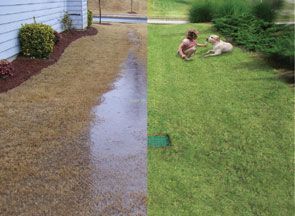
A French drain system is a simple yet effective solution to deal with waterlogged soil or surface water by directing the water to drain away through underground pipes. It is a common drainage solution used by homeowners and businesses to prevent water damage to their property. If you’re considering installing a French drain on your property, you may be wondering what to expect from the before and after.
The before and after the installation of a French drain is striking, with the wet area of your landscape becoming a dry one. The significant difference in the drainage system is the most noticeable change after the installation, wherein the water once pooled now flows freely into a system that carries it away from your property. In conclusion, a French drain can be a smart investment that can protect your property from future water damage and give you peace of mind.
Yard French Drain Before and After
Installing a yard French drain can be an effective solution to manage water runoff in your property. With the drainage system, excess water can be easily diverted away, preventing potential water damage and other related issues. Before installation, it's essential to assess the level of water damage within your property and evaluate how your yard can benefit from the installation.
After the implementation of the French drain, it's essential to evaluate how the yard's appearance has changed and how it has positively impacted the drainage system. A yard French drain before and after can demonstrate the effectiveness of the installation and the improvements it can bring to your property. With careful planning and implementation, you can trust that the French drain installation will be a reliable solution for managing water runoff in your yard.
French Drains DIY can be a cost-effective solution for homeowners with drainage problems around their property. However, before tackling this task, it is crucial to understand the proper excavation techniques and materials needed to ensure the success of the project. With the right tools and knowledge, the installation of French Drains can be a rewarding experience that can save money and eliminate frustrating water issues around the landscape. Homeowners looking to take on this DIY project should carefully research the necessary steps and seek professional advice to ensure a durable and long-lasting drainage system on their property.
Installing a French Drain DIY
Installing a French Drain DIY is a substantial project that can significantly benefit your home. A French drain can help redirect undesired water and protect your property from flooding. Many homeowners choose to hire professionals to install this drainage system, but with the right tools, materials, and knowledge, you can accomplish this task yourself. Proper planning and preparation are key to a successful project. You must decide on the proper placement of the drain, calculate the amount of gravel and pipe required, and ensure proper slope to ensure proper drainage. For those who are confident in their DIY skills, installing a French drain can provide peace of mind and a more functional outdoor space.
DIY French Drain Backyard
As a homeowner, there's nothing quite as satisfying as tackling a DIY project in your backyard. One of the most practical and functional upgrades you can make is a French drain. Not only will it help prevent erosion and water damage, but it can also improve the appearance and overall functionality of your outdoor space. While the thought of installing a French drain may seem daunting, it's actually a manageable project that can be completed in a weekend with some basic tools and a little bit of elbow grease. By taking the time to thoroughly plan and execute your DIY French drain project, you'll be able to enjoy a beautiful and functional backyard for years to come.
DIY French drain
When it comes to dealing with excess water from heavy rainfall or plumbing issues, a DIY French drain is a great option for homeowners looking to manage water movement around their property. A French drain system can help redirect water away from your home's foundation and into a designated drainage area, using gravel and a perforated pipe to create a porous underground pathway.
While it may seem daunting at first, building your own French drain system is certainly feasible with some careful planning and a bit of elbow grease. With a little bit of research and the necessary tools, homeowners can save money on professional installation and equip their homes with a drainage system that will stand the test of time.
When it comes to protecting your property from water damage, a Foundation French Drain is a highly effective solution. Installed beneath the ground and around the perimeter of your property, this drainage system draws water away from your foundation and directs it away from your property.
Not only does this prevent water from seeping into your basement or crawl space, it also helps preserve the structural integrity of your foundation by preventing soil erosion and settling. Whether you're looking to prevent flooding during heavy rains or simply want to keep your foundation in top condition, a Foundation French Drain can provide the protection you need. Trust a professional to install this crucial system and enjoy the peace of mind that comes with knowing your property is well-protected.
When building a sturdy foundation for your home, it is essential to consider ways to prevent water damage. A French drain foundation is a popular and effective method used by many builders. A French drain is a trench with a perforated pipe to redirect surface and groundwater away from a structure. The trench is filled with gravel and surrounded by a landscape fabric to prevent soil from getting into the pipe. This drainpipe directs excess water away from the foundation, protecting the foundation from water damage. A French drain foundation is an excellent investment to make when constructing a long-lasting, secure foundation for your home.
Foundation French Drain Detail
When it comes to protecting your property's structure from water damage, a foundation French drain detail is a must-have. This type of drainage system is designed to divert and channel water away from the foundation and basement of your building, ensuring that structural damage doesn't occur. A proper foundation French drain detail includes a perforated drainage pipe, a layer of gravel, and a filter fabric that prevents dirt and debris from getting in and clogging the drain. When installed correctly by a professional, this type of drainage system can provide long-lasting protection for your property, giving you peace of mind and reducing the risk of costly repairs down the road.
French Drain Around Foundation
One essential aspect of protecting a building is ensuring that the foundation remains robust over time. A French drain around foundation is a smart solution to assist with this critical task. This type of drain consists of a perforated pipe that is typically installed alongside the foundation. Its primary function is to remove water from the surrounding soil and direct it away from the foundation to prevent moisture from intruding beneath the building. With a well-placed French drain, not only will the foundation remain sturdy, but the risk of water damage to the building and the health hazards associated with mold can be minimized. Professional installation of a French drain around foundation can be an excellent investment in the long-term stability and security of any building.
Exterior Foundation French Drain
Preventing water damage is an essential aspect of maintaining the health and safety of a property. Exterior Foundation French Drain is a smart and efficient way to solve this problem. This system effectively diverts water away from the foundation of a building and guides it to an appropriate drainage area. By installing an exterior foundation French drain, property owners can enjoy peace of mind knowing that their investment is protected against flooding, water penetration, and foundation damage. Whether it is for commercial or residential properties, a professional and reliable contractor can install this system quickly and efficiently. Protect your property today by investing in an exterior foundation French drain.
Denver Sewer & water is a fully licensed and insured drain service provider, offering quality workmanship and ensuring your safety and peace of mind. We guarantee you’ll be satisfied with our French drain services, which is why we’re pleased to offer a 5-year transferable warranty on all of our work. When you need a company that gets the job done right the first time, so you don’t have to hassle with ongoing issues and expenses, the experts at Denver Sewer & Water are the best choice for French drain installation & replacement in Denver.
Whether you need partial French drain repairs, French drain replacement, or full French drain installation, Denver Sewer & Water finds solutions for stopping big drainage issues and drainage problems before they start. Our service includes a complete examination of your property for the best way to build your new Frech drains, we are French drain experts often identify and solves the problems you’re having on the spot. For more complex problems, Denver sewer & water offers a variety of options for repairing or renovating your sewer lines: Denver Sewer & Water can give you a free estimate for installation or sewer line replacement in Denver. Call 720-720-935-6221 or contact us to schedule an appointment.
